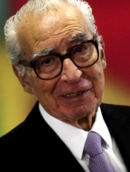| ||||||||||||||||||||||||||||||||||||||||||||||||||||||||||||||||||||||||||||||||||||||||||||
250 seats to the Portuguese Assembly 126 seats needed for a majority | ||||||||||||||||||||||||||||||||||||||||||||||||||||||||||||||||||||||||||||||||||||||||||||
|---|---|---|---|---|---|---|---|---|---|---|---|---|---|---|---|---|---|---|---|---|---|---|---|---|---|---|---|---|---|---|---|---|---|---|---|---|---|---|---|---|---|---|---|---|---|---|---|---|---|---|---|---|---|---|---|---|---|---|---|---|---|---|---|---|---|---|---|---|---|---|---|---|---|---|---|---|---|---|---|---|---|---|---|---|---|---|---|---|---|---|---|---|
| Registered | 7,818,981 | |||||||||||||||||||||||||||||||||||||||||||||||||||||||||||||||||||||||||||||||||||||||||||
| Turnout | 5,798,929 (74.2%) | |||||||||||||||||||||||||||||||||||||||||||||||||||||||||||||||||||||||||||||||||||||||||||
| ||||||||||||||||||||||||||||||||||||||||||||||||||||||||||||||||||||||||||||||||||||||||||||
| ||||||||||||||||||||||||||||||||||||||||||||||||||||||||||||||||||||||||||||||||||||||||||||
The 1985 Portuguese legislative election took place on 6 October. The election renewed all 250 members of the Assembly of the Republic.
In June of the same year, the then incumbent Prime Minister, Mário Soares, resigned from the job due to the lack of parliamentary support, the government was composed by a coalition of the two major parties, the center-right Social Democratic and the center-left Socialist, in what was called the Central Bloc, however this was an unstable balance of forces and several members of each party opposed such alliance.
The new leader of the Social Democratic Party, Cavaco Silva, elected in May, was among those that never supported such alliance, and short after being elected leader of the party made the coalition fall in July. Mário Soares didn't run again and resigned as party leader, as he decided to run for the 1986 Presidential elections. The PS nominated Almeida Santos, minister of state in Soares government, as intern leader and as the party candidate for Prime Minister.
A new election was called by the President and the Social Democrats won with a short majority and Cavaco became the Prime-Minister. The election was the first of three consecutive election victories for the Social Democratic Party. Meanwhile, a new party had been founded by supporters of the President Ramalho Eanes, the Democratic Renewal Party, led by Hermínio Martinho and which the main figure of the party's campaign was First lady Manuela Ramalho Eanes,[1] that surprisingly gained 45 MPs and more than one million votes in the election, becoming the parliamentary support of the Cavaco's government until 1987, when it removed its support, making Cavaco fall.
The Communists and the Socialists lost votes and MPs, and the left would only return to the government ten years later, in 1995.





